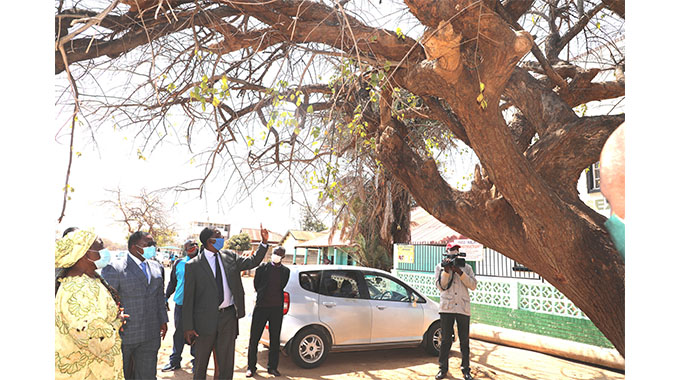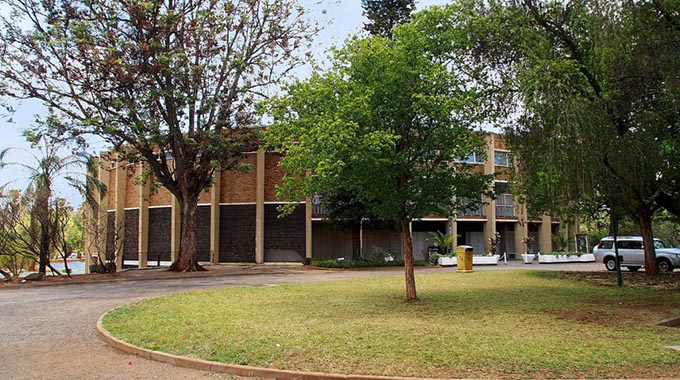
The Sunday News

Bruce Ndlovu, Sunday Life Reporter
SOLAR farms, vehicle assembly plants, new shopping malls, bonded warehouses, industrial parks and an integrated modern transport system are just some of the boxes that city fathers intend to tick over the years as Bulawayo takes the long strides towards smart city status.
It is a lofty ambition shared by most of the country, as Zimbabwe seeks to match the rest of the world stride for stride as a digital revolution sweeps across the globe. Like many others, Bulawayo does not want to be left behind.
However, in this push to bring the city up to modern standards, there has not been any rush to obliterate the cultural landmarks that are deeply imbedded in the City of Kings’ royal DNA.
Among those are the landmarks that form part of the Bulawayo Urban Heritage Corridor, key cultural and historical land points around the city without which the story of Bulawayo could not be told in full.
In June 2021, President Mnangagwa launched the Urban Heritage Corridor, bringing attention to gems that are an indispensable part of Bulawayo’s cityscape. With the Sanganai/ Hlanganani World Tourism Expo set to be held in Bulawayo at the Zimbabwe International Exhibition Centre from 13 to 15 October, Sunday Life takes a stroll through the Heritage Corridor, beckoning visitors towards the city’s most unique landmarks while reminding residents of the treasures that lie on their doorstep.

Joshua Nkomo Statue
Perhaps the fact that the statue was only erected in 2013 is the greatest testament to the influence of the late nationalist. Less than a decade since Big Josh started standing tall at the intersection of Joshua Mqabuko Street and 8th Avenue, the statue has become one of the most revered and visited hotspots in the city.
The fact that the millennial generation, who cannot be accused of being camera shy by any stretch of the imagination, have made the statue a prime destination for photo opportunities, is perhaps the greatest way of honouring the legacy of a man who always stood by and behind the country’s youth during his illustrious lifetime.

Joshua Nkomo Museum
Joshua Nkomo Museum .A book, a statue or a song is not enough to remember the life of a titanic figure like Father Zimbabwe, one of the stalwarts of Zimbabwe’s protracted war of liberation.
The museum, opened in 2012, is perhaps the greatest attempt made to catalogue the life and times of a larger-than-life character. The museum’s 10 rooms contain portraits, newspaper cuttings, photographs, clothes, tools, kitchen utensils including all the movable property that the late Nkomo and his wife, the late Joana “Mama MaFuyana” Nkomo used.
History confronts one as they walk through the gates of the museum, with a navy-blue bullet-proof Mercedes Benz, whose smooth metal is scarred by bullet holes from an assassination attempt, giving the visitor an apt introduction into the life of a man whose life was often punctuated by periods of violence as he fought for the liberation of his people.
The Hanging Tree

National Museums and Monuments of Zimbabwe director Dr Godfrey Mahachi explains to Minister of Home Affairs and Cultural Heritage, Cde Kazembe Kazembe on the historical significance of the Hanging tree during a tour of the site last year
History, has its dark spots where pain resides in ample measure and for Zimbabwe, colonialism was that deep wound which time can never truly heal. If one was to take a stroll to the Hanging Tree, they will catch a great example of a wound that continues to fester in broad daylight despite the passage of time.
This is where nine black Africans who resisted white colonial settler rule during the first uprising were hanged by Baden Powell, the man who started the Boy Scout movement which subsequently spread to many other parts of the world.
The hanging tree, an average-sized specimen of a false marula, or lannea schweinfurthii, with a wide-spreading crown, serves as a monument to the three people who were reportedly hanged for allegedly looting when the inhabitants of Bulawayo were moved from their homes. Six others for allegedly spying by the kangaroo courts.
St Mary’s Basilica

St Mary’s Basilica
When in Rome do as the Romans do, the adage goes. However, if one wants to catch a glimpse of how the Romans constructed their Basilicas, they only need to visit Bulawayo and take in the sight of Cathedra Basilica of the Immaculate Conception.
On the corner of 9th Avenue and Lobengula Street, 300 tonnes of roof are supported by granite rock harvested from the hills of Matopos. It is the only building of its nature in Southern Africa, making St Mary’s Basilica not only Bulawayo’s most prestigious home of worship, but a potential hotbed for tourism.

Natural History Museum in Bulawayo
The only museum of its nature in the whole country, the Natural Museum has enjoyed an interesting and nomadic life since it was first conceived in 1902, moving from one piece of prime real estate in the city to another.
The museum was first located at what is now the Bulawayo Public Library before moving to Parcels House on Fort Street and 8th Avenue in 1908. It has since settled at the historic Centenary Park where, it displays a very rich diversity and variety of mammals, butterflies, birds and geological specimens from numerous geographical areas and habitats within and outside of Zimbabwe.



